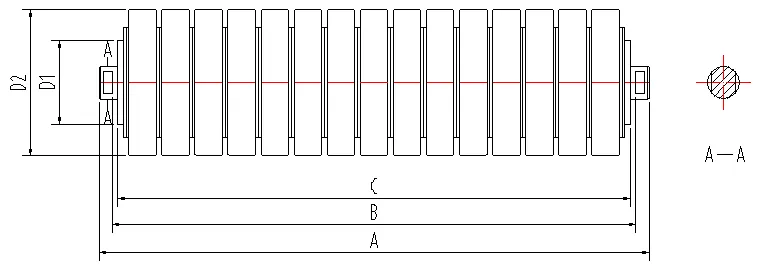 Afrikaans
Afrikaans  Albanian
Albanian  Amharic
Amharic  Arabic
Arabic  Armenian
Armenian  Azerbaijani
Azerbaijani  Basque
Basque  Belarusian
Belarusian  Bengali
Bengali  Bosnian
Bosnian  Bulgarian
Bulgarian  Catalan
Catalan  Cebuano
Cebuano  Corsican
Corsican  Croatian
Croatian  Czech
Czech  Danish
Danish  Dutch
Dutch  English
English  Esperanto
Esperanto  Estonian
Estonian  Finnish
Finnish  French
French  Frisian
Frisian  Galician
Galician  Georgian
Georgian  German
German  Greek
Greek  Gujarati
Gujarati  Haitian Creole
Haitian Creole  hausa
hausa  hawaiian
hawaiian  Hebrew
Hebrew  Hindi
Hindi  Miao
Miao  Hungarian
Hungarian  Icelandic
Icelandic  igbo
igbo  Indonesian
Indonesian  irish
irish  Italian
Italian  Japanese
Japanese  Javanese
Javanese  Kannada
Kannada  kazakh
kazakh  Khmer
Khmer  Rwandese
Rwandese  Korean
Korean  Kurdish
Kurdish  Kyrgyz
Kyrgyz  Lao
Lao  Latin
Latin  Latvian
Latvian  Lithuanian
Lithuanian  Luxembourgish
Luxembourgish  Macedonian
Macedonian  Malgashi
Malgashi  Malay
Malay  Malayalam
Malayalam  Maltese
Maltese  Maori
Maori  Marathi
Marathi  Mongolian
Mongolian  Myanmar
Myanmar  Nepali
Nepali  Norwegian
Norwegian  Norwegian
Norwegian  Occitan
Occitan  Pashto
Pashto  Persian
Persian  Polish
Polish  Portuguese
Portuguese  Punjabi
Punjabi  Romanian
Romanian  Russian
Russian  Samoan
Samoan  Scottish Gaelic
Scottish Gaelic  Serbian
Serbian  Sesotho
Sesotho  Shona
Shona  Sindhi
Sindhi  Sinhala
Sinhala  Slovak
Slovak  Slovenian
Slovenian  Somali
Somali  Spanish
Spanish  Sundanese
Sundanese  Swahili
Swahili  Swedish
Swedish  Tagalog
Tagalog  Tajik
Tajik  Tamil
Tamil  Tatar
Tatar  Telugu
Telugu  Thai
Thai  Turkish
Turkish  Turkmen
Turkmen  Ukrainian
Ukrainian  Urdu
Urdu  Uighur
Uighur  Uzbek
Uzbek  Vietnamese
Vietnamese  Welsh
Welsh  Bantu
Bantu  Yiddish
Yiddish  Yoruba
Yoruba  Zulu
Zulu head pulley tail pulley
Understanding Head Pulleys and Tail Pulleys in Conveyor Systems
Conveyor systems are an essential component of modern industry, facilitating the efficient movement of materials across various processes. Among the critical components of these systems are head pulleys and tail pulleys, which play vital roles in the functionality and efficiency of conveyor belts. Understanding these elements can provide insights into how conveyor systems operate and the importance of maintenance, design, and functionality.
What are Head and Tail Pulleys?
Head Pulley The head pulley is located at the discharge end of a conveyor system. It is typically the drive pulley, meaning it is connected to a motor that powers the conveyor belt. The head pulley ensures that the belt maintains tension and moves in a continuous loop, allowing materials to be transported efficiently from one location to another. In many cases, the head pulley is slightly larger in diameter, which aids in better grip and traction for the belt, thereby enhancing the overall effectiveness of the system.
Tail Pulley In contrast, the tail pulley is located at the loading end of the conveyor belt. Its primary role is to provide support to the belt as it moves back to the head pulley after discharging its load. The tail pulley helps maintain the tension of the conveyor belt, preventing sagging and ensuring a smooth transition for materials being loaded onto the belt. This pulley does not typically drive the system but plays a crucial role in its overall stability.
Importance of Head and Tail Pulleys
Head and tail pulleys are vital for several reasons
head pulley tail pulley

1. Efficiency These pulleys enable the continuous operation of conveyor systems, ensuring that materials are transported efficiently without interruptions. A well-functioning head pulley drives the belt, while the tail pulley assists in maintaining tension.
2. Wear and Tear Over time, head and tail pulleys can experience wear and tear due to friction, environmental conditions, and the weight of the materials being transported. Monitoring their condition is essential for the longevity of the conveyor system. Regular inspections can identify issues such as misalignment, corrosion, or excessive wear, allowing for timely maintenance or replacement.
3. Safety Properly functioning head and tail pulleys contribute to the overall safety of the conveyor system. A malfunctioning head pulley can lead to belt slippage or a complete breakdown, posing risks to personnel and equipment. Ensuring that these pulleys are in good condition is essential for hazard prevention.
4. Design Considerations When designing a conveyor system, consideration of the head and tail pulleys is crucial. Engineers must carefully calculate the pulley diameters, material types, and tension specifications to ensure optimal performance. The right design can improve efficiency, reduce energy consumption, and extend the lifespan of the conveyor system.
Conclusion
In summary, head pulleys and tail pulleys are integral components of conveyor systems that facilitate the smooth and efficient movement of materials across various industrial processes. Their roles in driving and supporting the conveyor belt cannot be understated, and their proper maintenance is essential for ensuring safety and efficiency. With a thorough understanding of these components, industries can better appreciate the engineering that underpins their operations and the importance of regular maintenance to ensure longevity and reliability. Whether in manufacturing, mining, or logistics, recognizing the significance of head and tail pulleys will contribute to improved operational practices and enhanced productivity.
-
Revolutionizing Conveyor Reliability with Advanced Rubber Lagging PulleysNewsJul.22,2025
-
Powering Precision and Durability with Expert Manufacturers of Conveyor ComponentsNewsJul.22,2025
-
Optimizing Conveyor Systems with Advanced Conveyor AccessoriesNewsJul.22,2025
-
Maximize Conveyor Efficiency with Quality Conveyor Idler PulleysNewsJul.22,2025
-
Future-Proof Your Conveyor System with High-Performance Polyurethane RollerNewsJul.22,2025
-
Driving Efficiency Forward with Quality Idlers and RollersNewsJul.22,2025





























